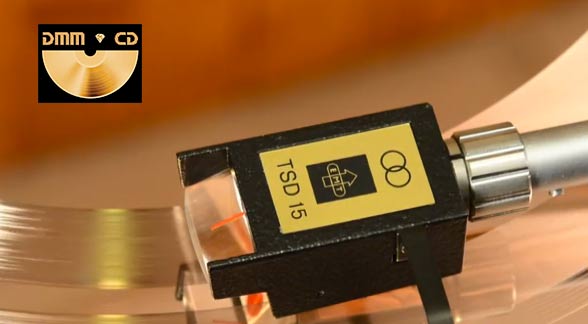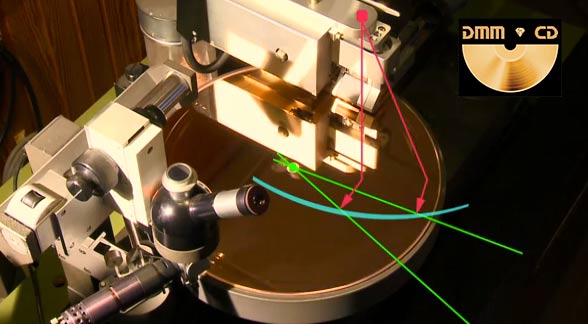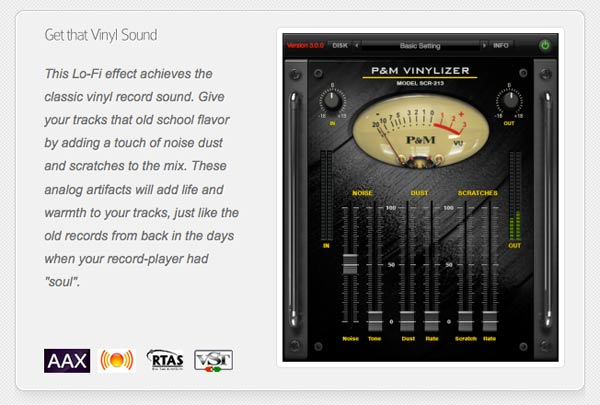A New Format?
Stockfish Records is a very highly regarded German record label that produces new recordings of acoustic music. They release their products on CDs, SACDs and vinyl LPs. A recent comment regarding the quality of their recording brought me to their website where I discovered another new format announcement. The format known as DMM-CD/SACD was announced last summer.
I’ve already talked about DMM or Direct Metal Mastering (read Direct-to-Disc but this new format takes the freshly cut copper metal part immediately back to the digital domain and results in a CD/SACD hybrid disc. Clever idea…maybe.
Here’s the introductory blurb from their website:
“More and more music lovers are discovering the unique sound of a vinyl record. We have thought about whether it is possible just to make the sound creation factors of a vinyl record audible. A pressed record however has many artefacts arising from the vinyl pressing i.e. distortion, rumble, groove noise, vertical and lateral aberrations, clicks, etc. and other artefacts that are detrimental to a good sound. Having said that, music lovers have already become accustomed to these disadvantages.”
I find it interesting that Stockfish, a provider of 180 gram high quality vinyl LPs, includes a discussion of all of the bad attributes of vinyl pressings in their statement. And they’re right about the shortcomings of vinyl. The sound of vinyl may be desired but the hassle and compromises required to produce one make it too difficult for me.
The DMM-CD/SACD uses a state-of-the-art cutting lathe (a Neumann VMS-82) running at 45 rpm to cut a fresh blank copper substrate. The RIAA equalization curve is required, of course, and the usual sonic modifications are applied as the signal is sent to the cutting head. Things like summing low frequencies to mono and hyping the high frequencies are typical modifications. Only a small portion of the entire disc surface is cut to optimize the geometry of the pick-up arm…minimizing angular distortions during playback.
Figure 1 – A photo showing the ideal groove area of a disc master.
Then they “playback” the copper master from the cutting lathe with an EMT’s Broadcast TONDOSE TSD-15 cartridge into a EMT JPA66 valve pre-amplifier to apply the RIAA reverse curve and then digitize to 1-bit DSD 64 using a Meitner EMM Labs adc 8 MK IV analog to digital converter.
“The DSD signal is then recorded at a sampling rate of 2.8224 MHz on to our SADiE DSD8 mastering system. Later, on the finished Hybrid-SACD, you will find this true 1-bit DSD layer and also a generated CD format at 16-bit/44,1kHz.”
In essence, Stockfish Records is giving you the best possible vinyl LP fidelity as a digital file…and they’re calling it a new format. Well, it;s not really a new format, but it is an interesting idea…if you’re a fan of vinyl.
It reminds me of the Volkswagon automobile company. The VW bug was originally designed and manufactured in Germany during WWII. The novel ideal behind the VW beetle was to perfect it year after year until the ultimate automobile emerged. While other auto makers were busy doing expensive aethetic changes to their models, VW was actually refining the bug. In the end, the VW beetle is the perfect 1940s car. Rather than adopt new materials, technology and engineering processes, they perfected a design that is decades out of date.
Isn’t that what Stockfish has decided to do? They’re offering the “fidelity” of a vinyl LP in a digital container. While I haven’t tried it,there are various vinylizer applications or plug ins that you can use and presto…out pops a euphonious version of the original with the low frequencies folded to mono, lots of high end and limited dynamic range.
Figure 2 – A promo for a vinylizer plug in for Pro Tools…only $60.
Their decision to capture the output in DSD 64 is a questionable decision (I would use 96 kHz/24-bit PCM) AND then to extract a downconverted 44.1 kHz/16-bit PCM file for the CD from the DSD file, argh! A well-down CD from the outset would save them a lot of time, expense and trouble.
You can get a copy of this hybrid SACD/CD for only $33.




I have always found the direct to disc efforts rather disappointing. I have several in my LP collection and none of them are performances or recordings that I treasure. Their persistence appears to be another example of the triumph of hope over experience, or theory over reality. It is fine for the die hard give me analog fans but it makes little sense for those wanting digital files. Why add the expense? It seems like some recording studios or recording labels need some gimmick rather than just concentrating on core technique and quality production.
It would be interesting if someone unbiased did an objective technical analysis of how a needle behaves in a copper groove compared to a vinyl groove. I’m not sure it would necessarily deliver better performance.
For example, if friction is any higher, then all the geometric error forces are higher…. including modulational forces. And there could be other factors too.
I just received a copy of this disc. I remembered this post, so I am responding with what I just experienced.
First of all, part of my hobby is to buy different formats of the same album or song so I can compare the sound. On my system, when I do a comparisons, I tend to like the SACD better than a PCM disc (Blu-ray or DVD-Audio). However, I have to turn the bass up on SACD discs to make them match a blu-ray or CD.
I recently dusted of an old turntable and bought a $85 cartridge and an “audiophile quality” 180g album that contained songs I had on an Groove Note SACD. I wanted something that I could do a direct comparison with. The 33 1/3 rpm album came with a 45rpm disc with a few of the same songs. There was a difference I heard in the female vocal on the vinyl that I liked, but I was quickly reminded of all the other issues with vinyl that I didn’t like. Ever since that comparison, I’ve been looking for a vinyl sound on a digital format.
When I played the Stockfisch disc in my system today, I was thrilled. I felt like I had purchased a $50,000 turntable. It has a totally different sound than my other SACDs. My system has never sounded better. I can’t recommend this disc enough.
I paid $40 for this SACD. I am ordering two more for gifts for my audiophile friends. If Stockfisch had other DMM-CD/SACD titles to sell, I would buy those, too.
The only thing better would be a multi-channel version.
Their innovation certainly can reproduce the sound of vinyl on a digital medium. And I recognize that there are lots of music fans that love the “sound” of vinyl…it seems you’re one of them. Congrats! Having produced and engineered lots of high-resolution PCM digital recordings, I’m not ready to accept the compromises are part of the vinyl format. If it’s working for you…keep doing it.
Does a company have to go to such extremes, like cutting a copper substrate and capturing the playback signal through a phono cartridge, to achieve the “vinyl” sound? I’ve read your articles about mastering for vinyl records. I’m wondering why they can’t just “tweak” the sound strictly in the digital domain.
It is a compelling methodology and it obviously is the real deal. Could digital processing “model” the sound of vinyl…of course. But it wouldn’t necessary appeal to the advocates of analog process and machinery.